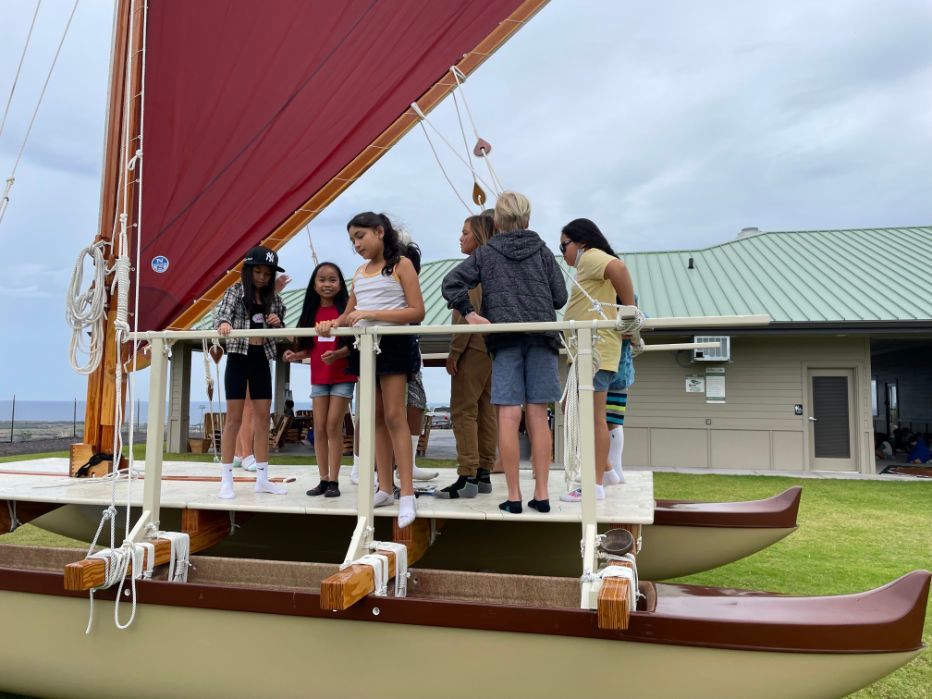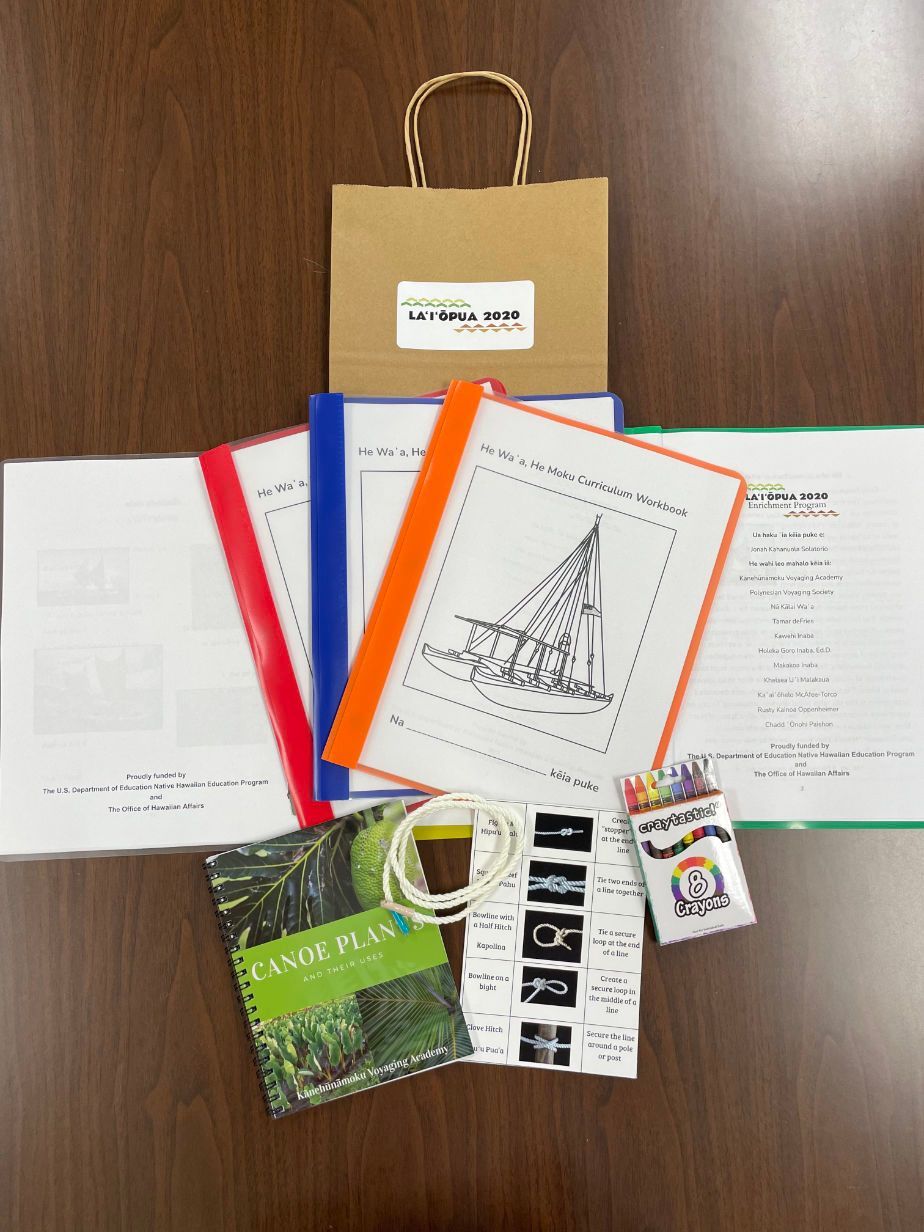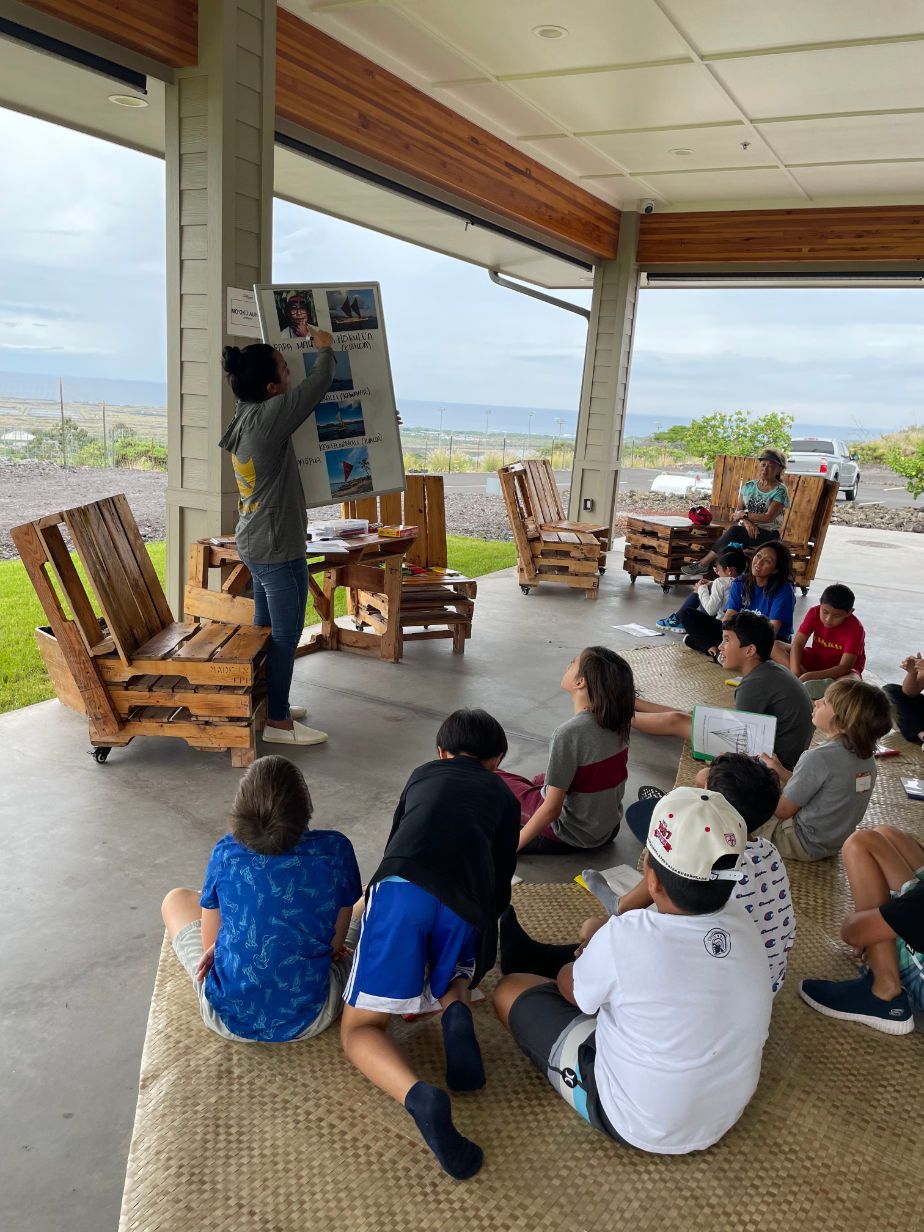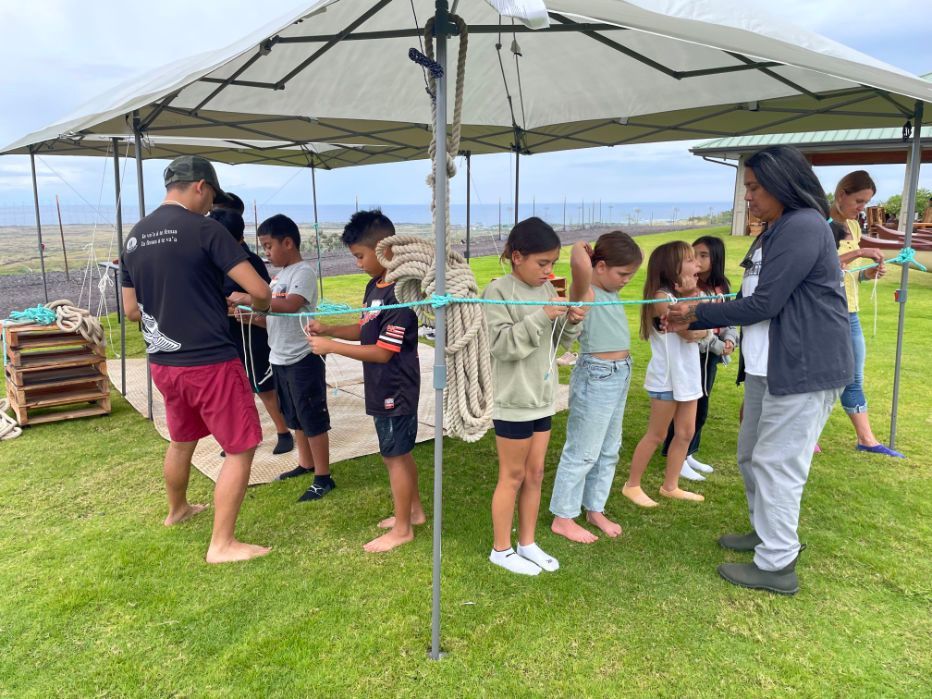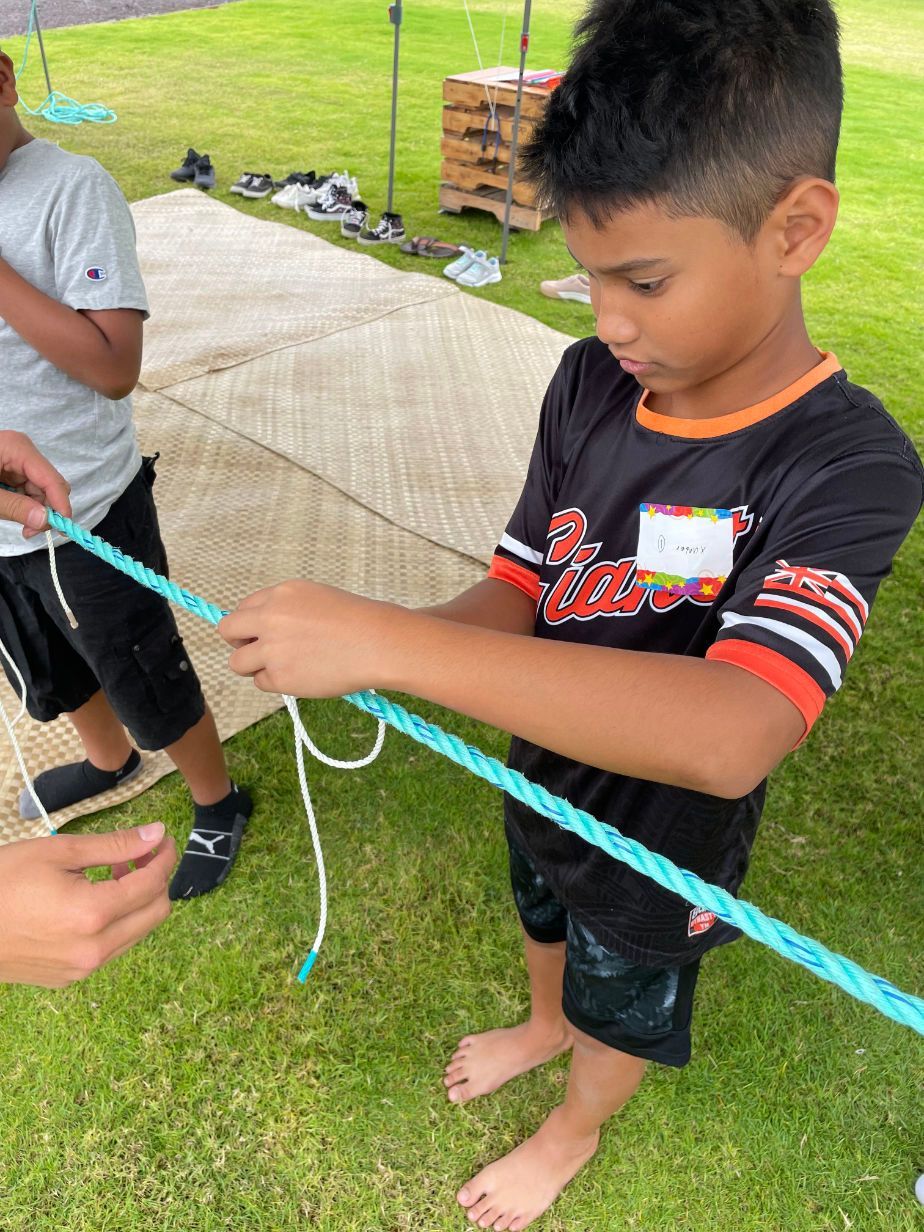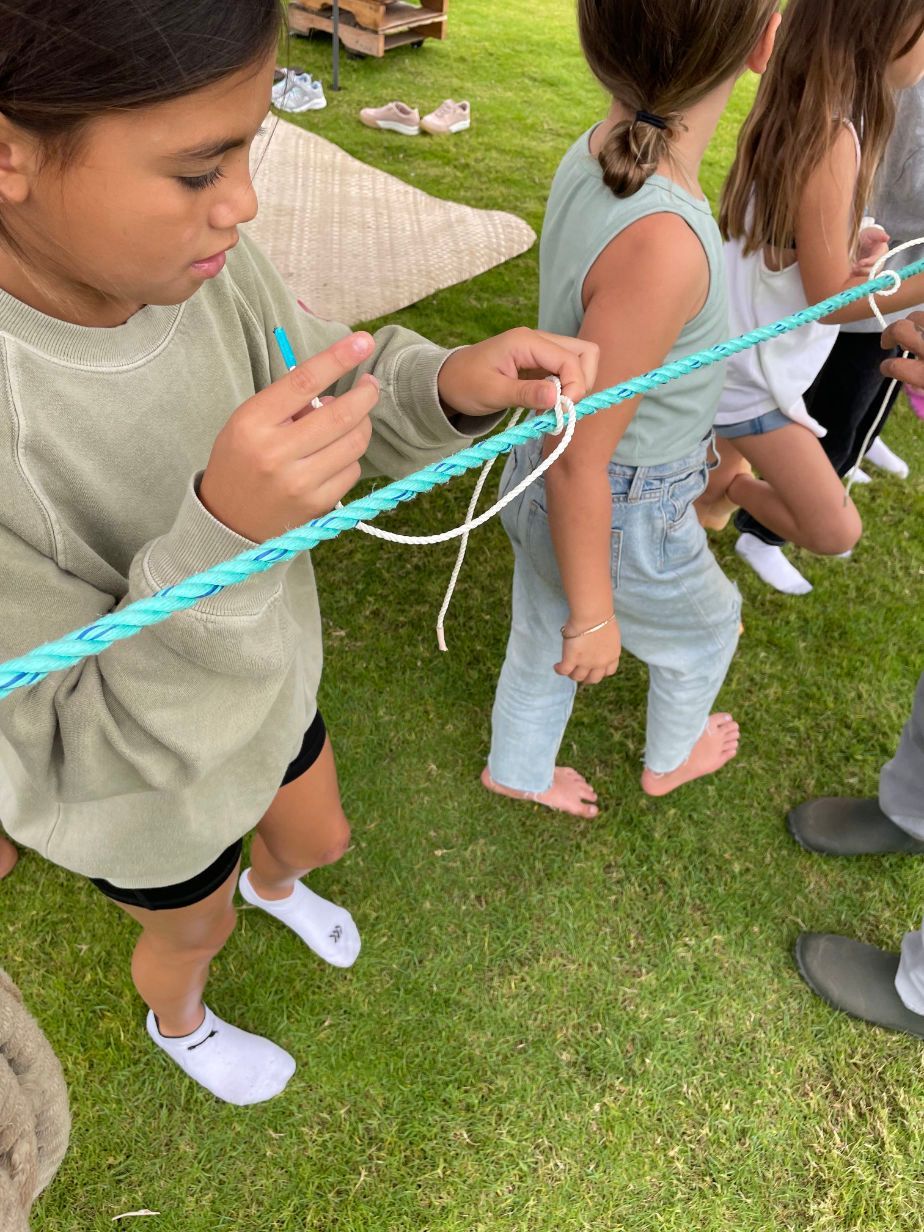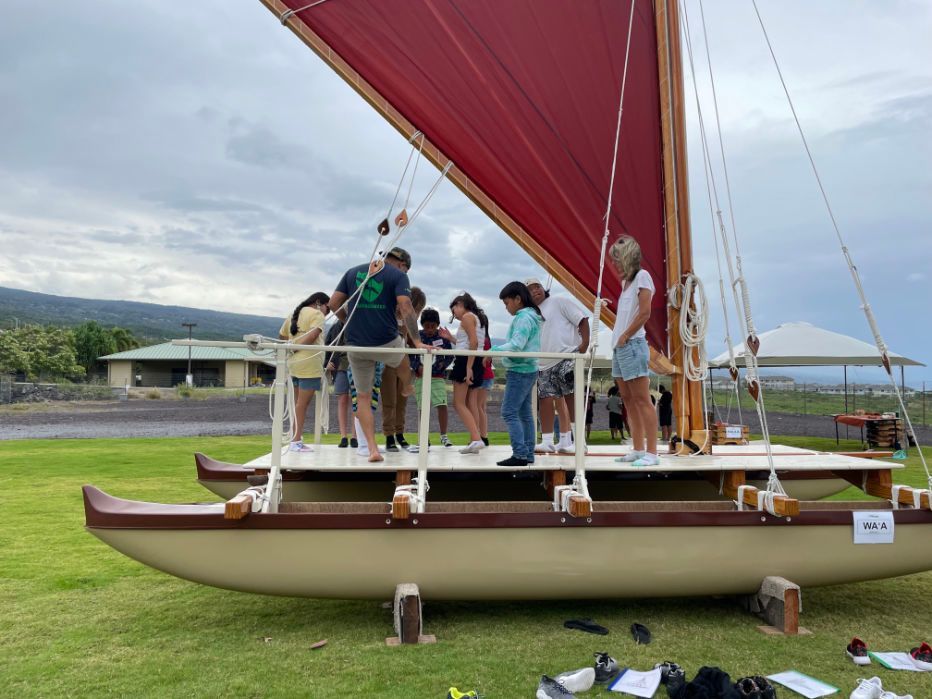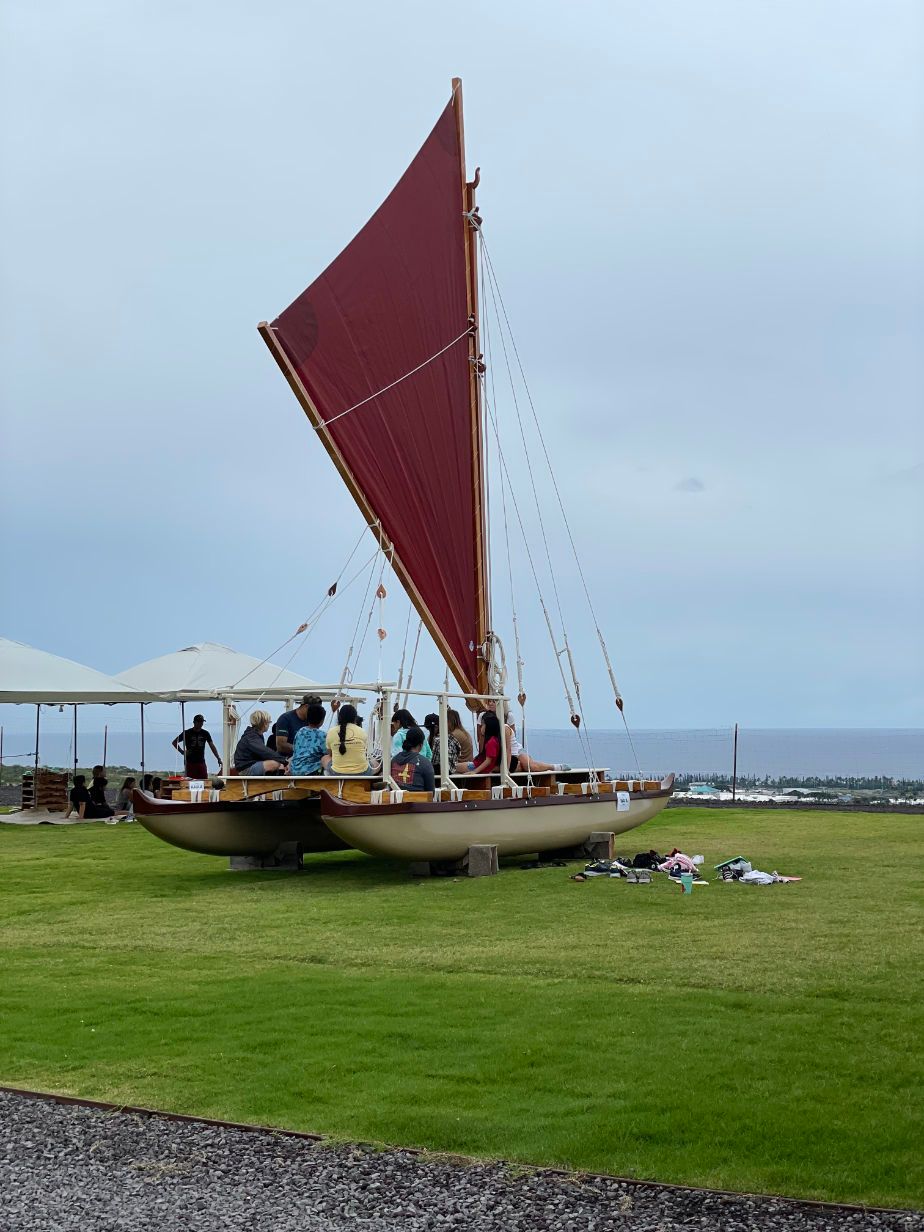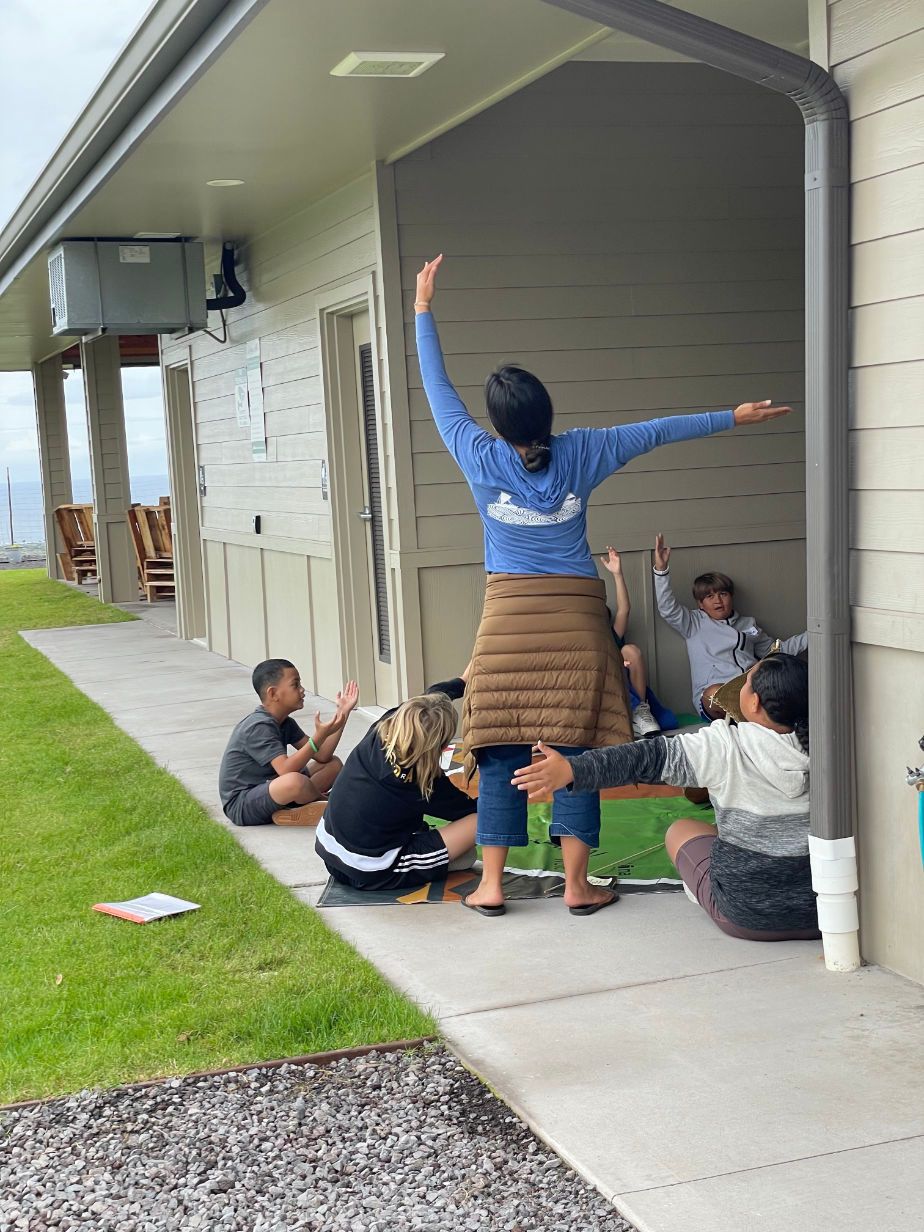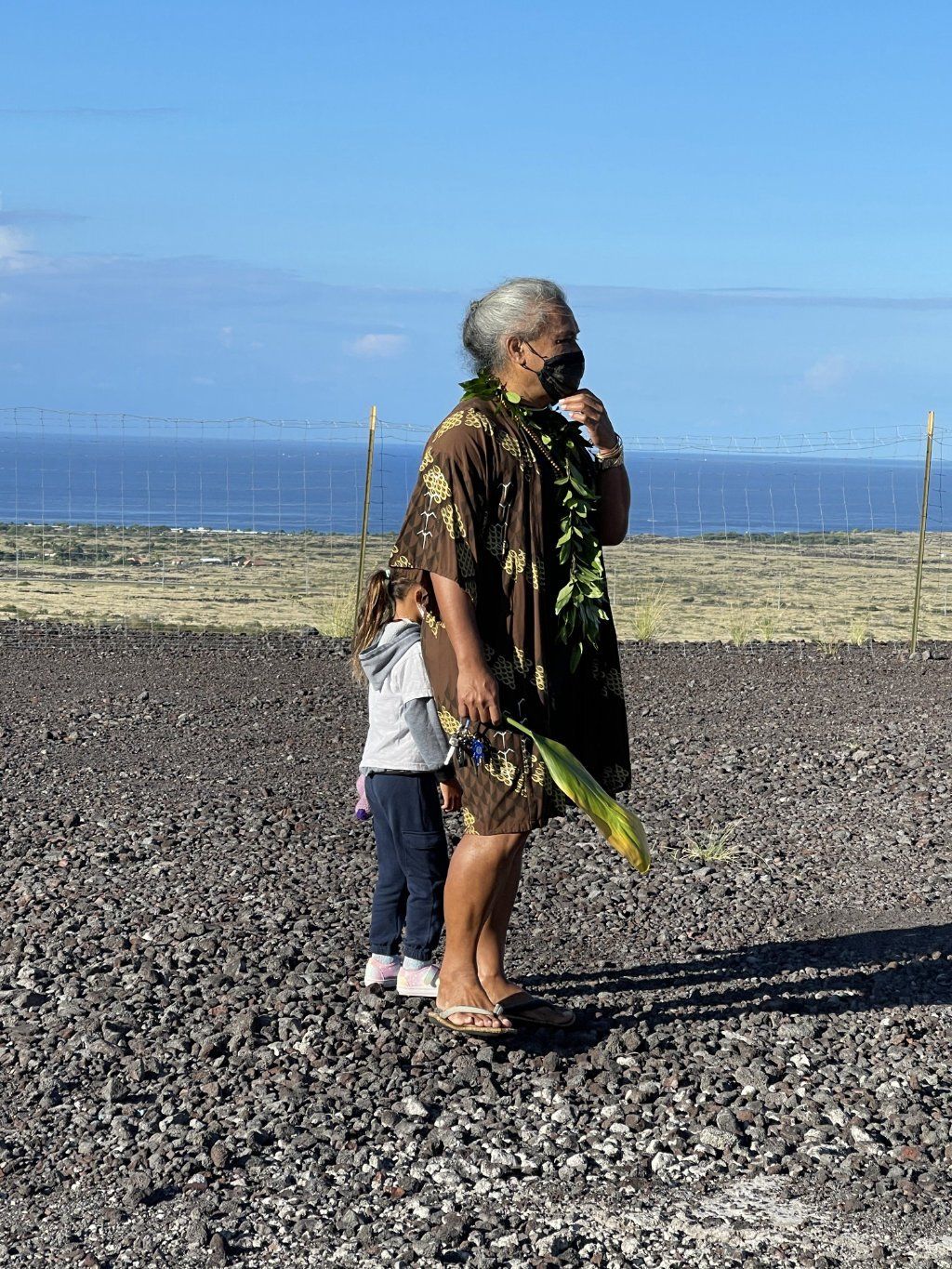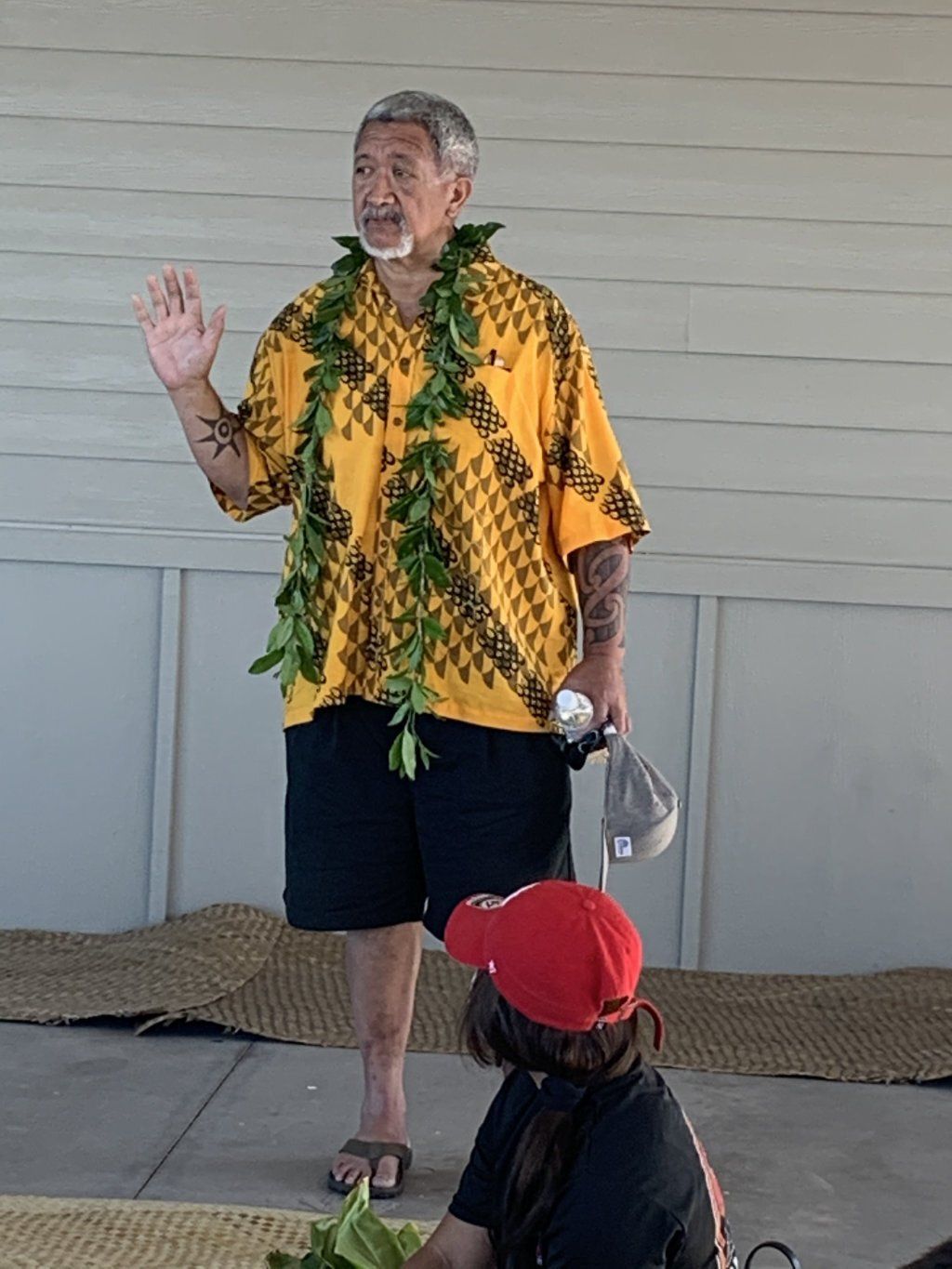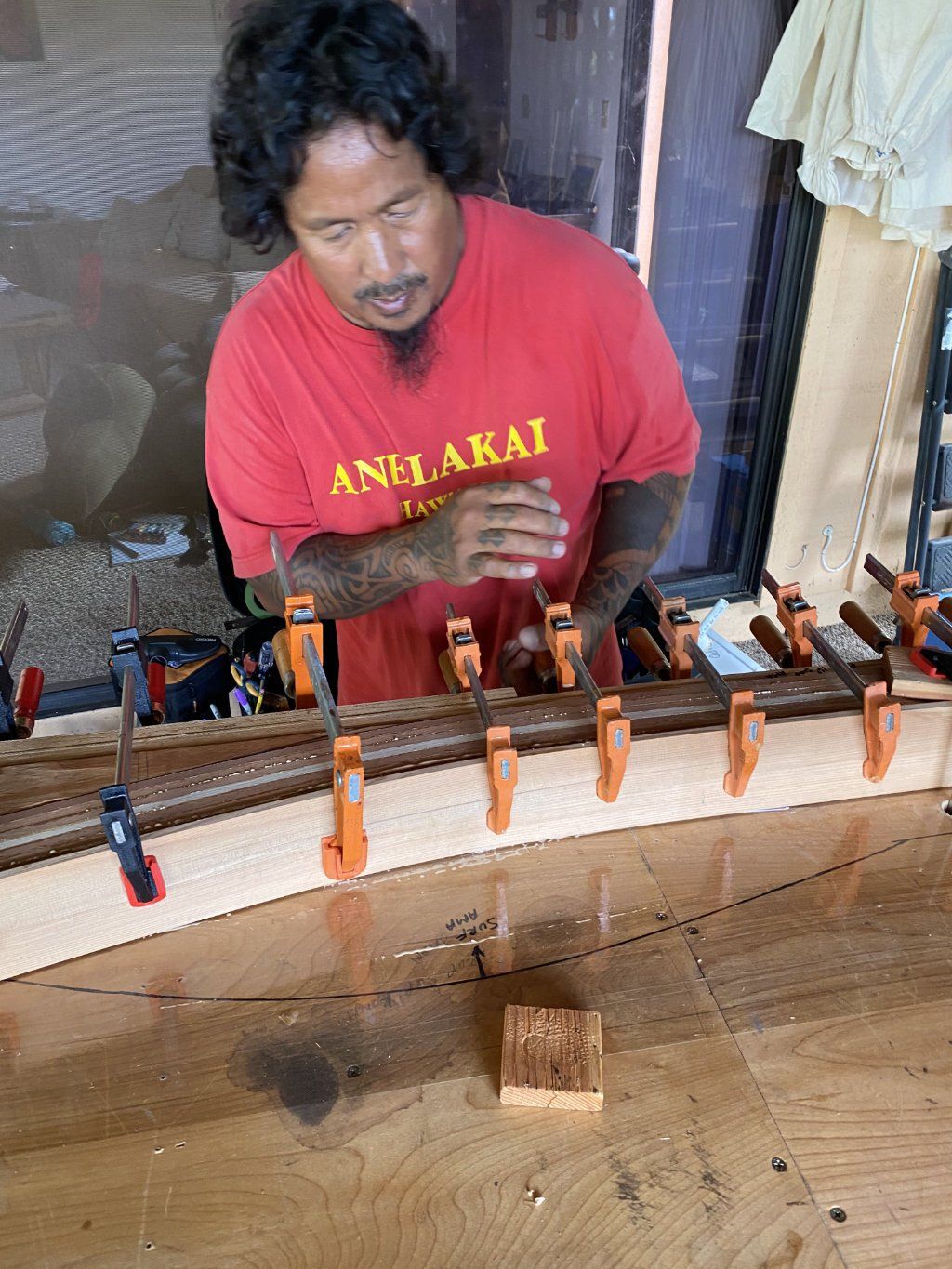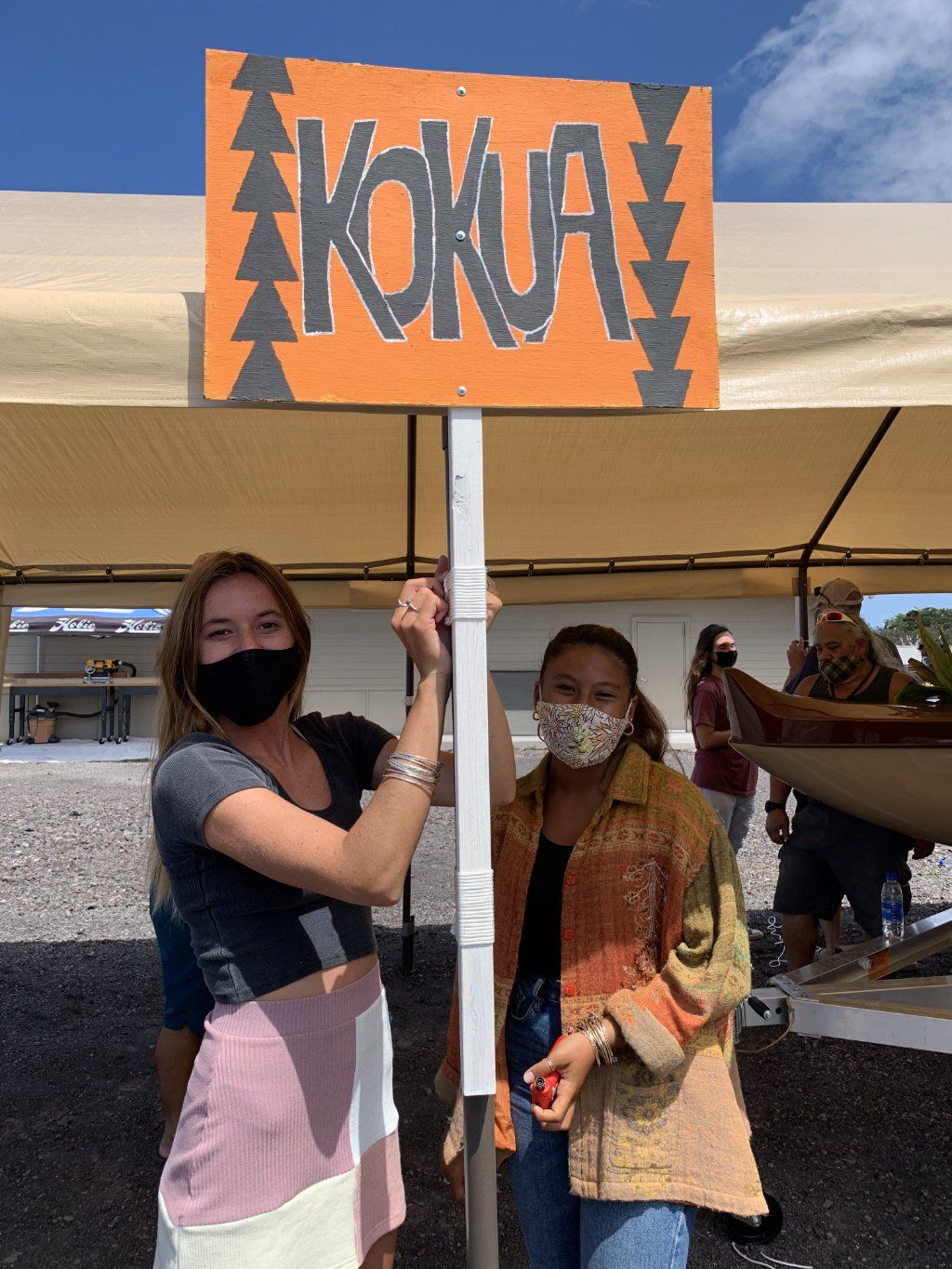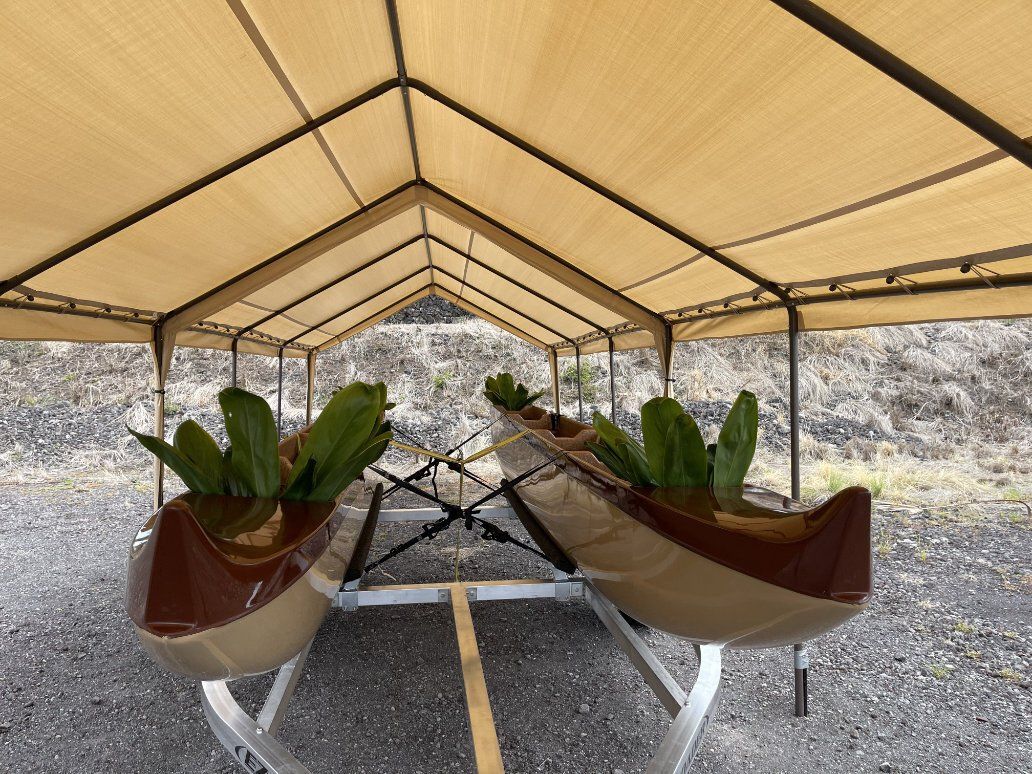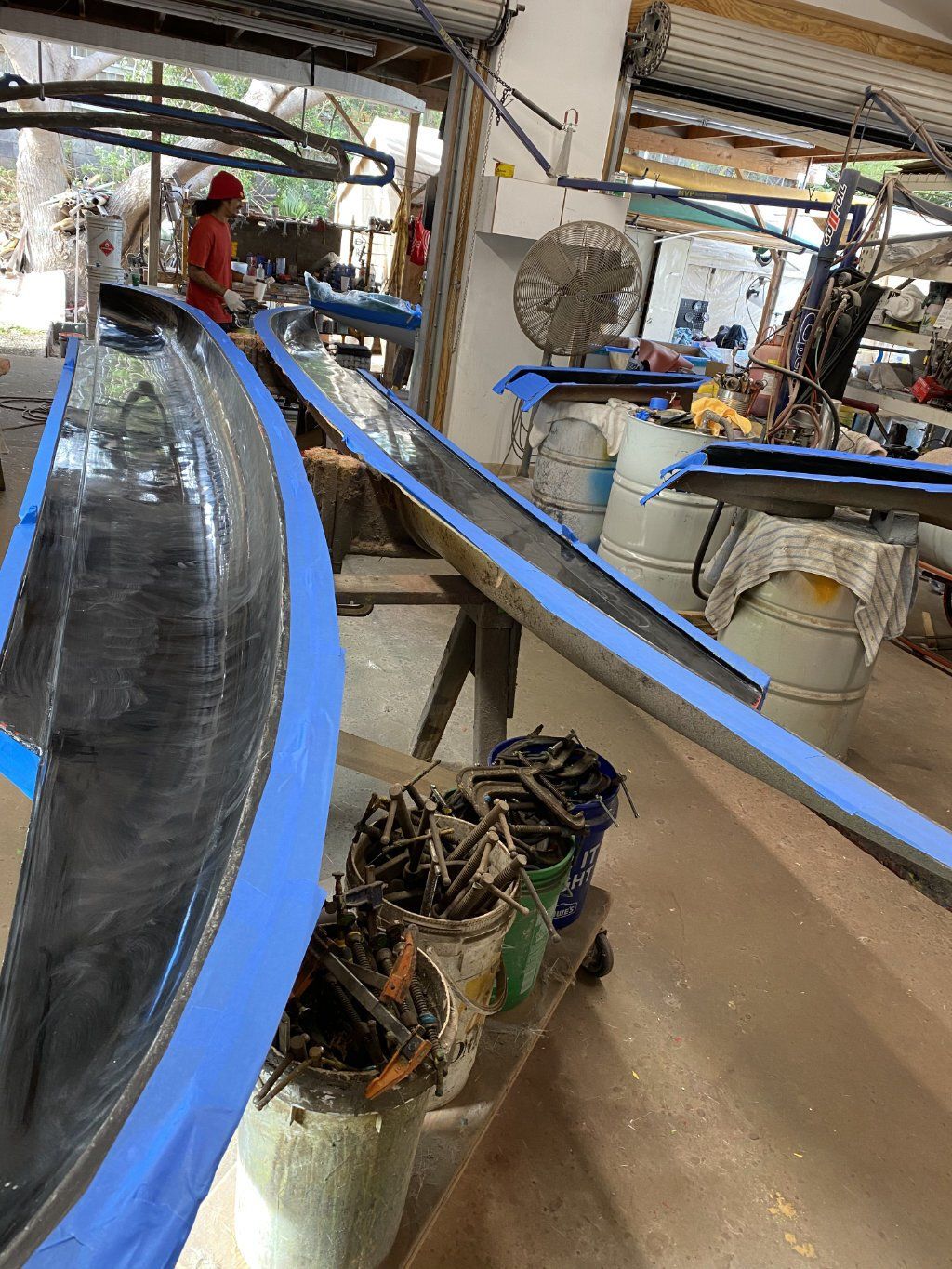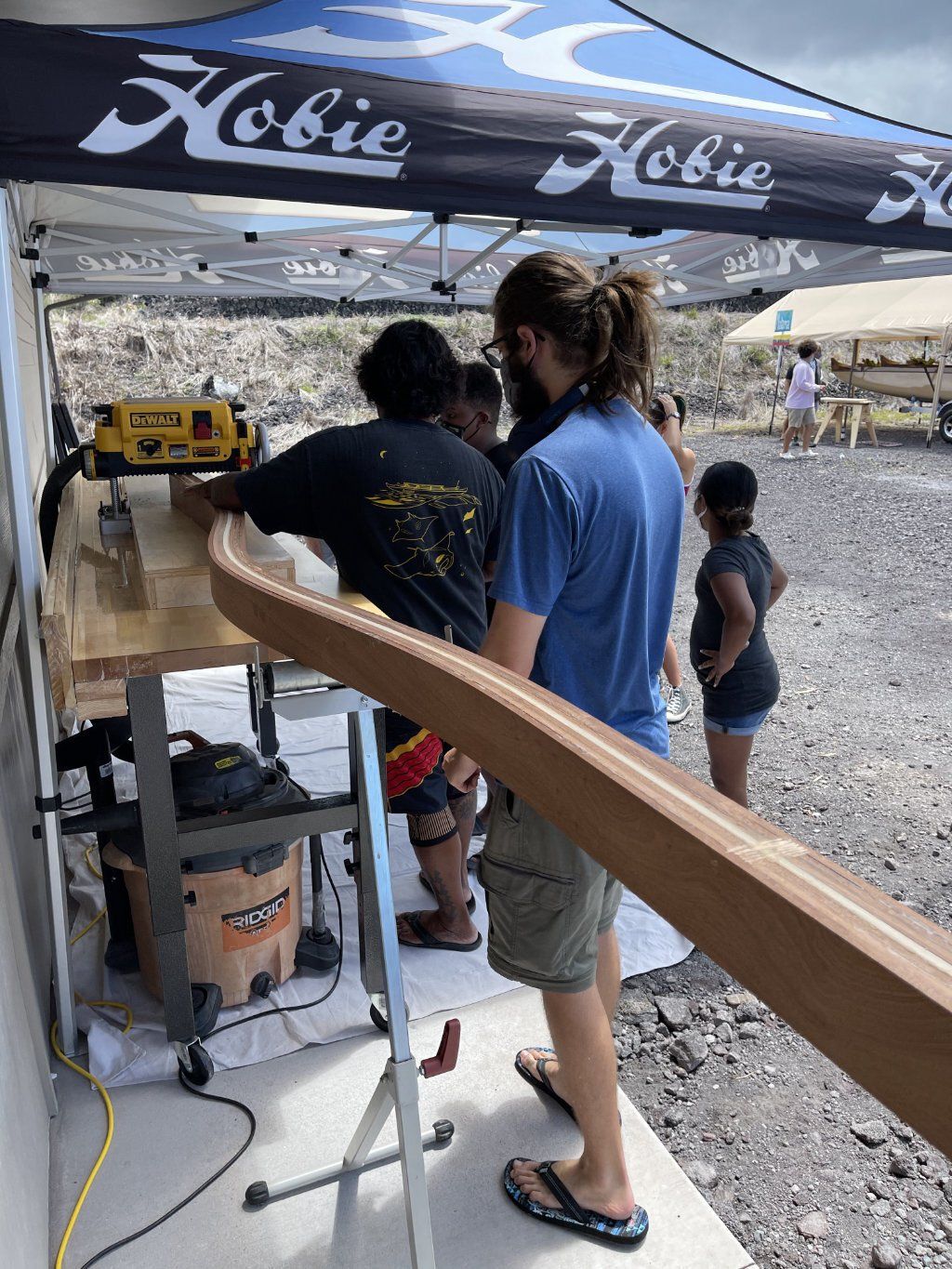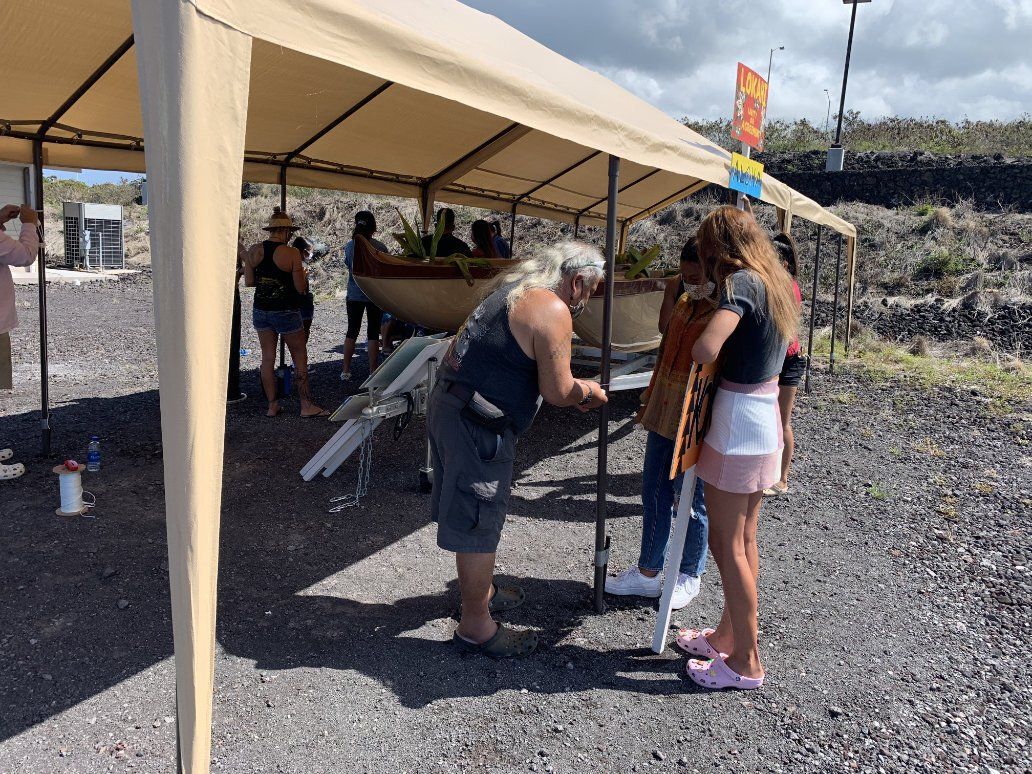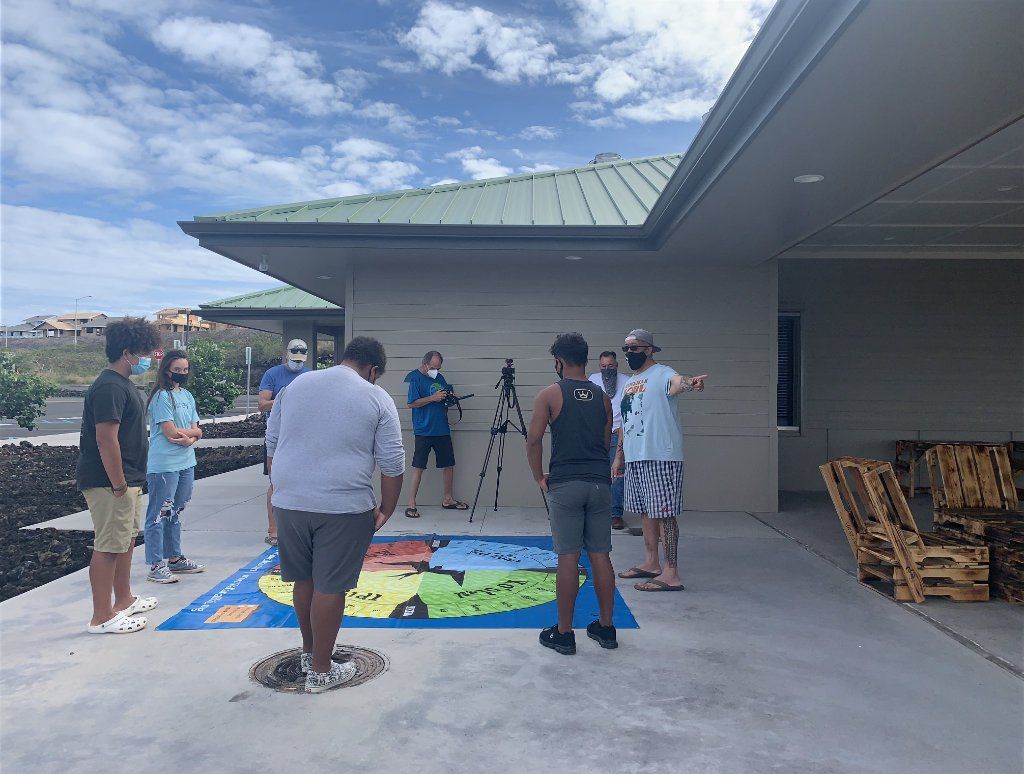He Waʻa he Moku ~ He Moku he Waʻa
"The Canoe is an Island and the Island is a Canoe"
Our beautiful waʻa, Laʻiʻōpua, is currently a traveling classroom, serving schools in West Hawaiʻi and L2020’s afterschool and summer programs. Future waʻa programs and activities are in the works.
Being birthed on the ‘aina of Hawaiian homelands at the Villages of La‘i‘ōpua in Kona is a wa‘a, a canoe named La‘i‘ōpua. Not since the Makali‘i was constructed in 1993, has there been an educational canoe on Hawai‘i Island built by the children of the area with the support of wa‘a builders, cultural advisors, kumu and kūpuna overseeing the direction of this treasured vessel. There have been canoes built for canoe clubs and sailing voyages, however the purpose of this canoe is for learning the tradition of Hawaiian canoe building, voyaging and community involvement.
Rusty Kainoa Oppenheimer
Program Director
Rusty is the captain of Laʻiʻōpua and will share his extensive waʻa and wayfinding skills with students and the community – in classrooms and aboard Laʻiʻōpua. He looks forward to bringing the waʻa to schools and places in communities and sharing the waʻa’s story.
Originally from Oʻahu, Rusty now resides in Laʻiʻōpua and continues to share his passion for waʻa and wayfinding. As a student of Hālau Kū Mana Public Charter school he was introduced to Kānehūnāmoku, a 29-foot, double hull coastal sailing canoe, and the voyaging canoe Makaliʻi. This is where his passion for waʻa kaulua began.
Rusty, who holds a US Coastguard Captain’s license, has served as captain of the Kānehūnāmoku, ensuring the safe and efficient operation of the vessel, and everyone onboard. He is also skilled in the maintenance and upkeep of multiple and various types of vessels.
He gained his experience during various sails throughout Hawaiʻi aboard several of Hawaiʻi’s voyaging canoes, including Makaliʻi and Kānehūnāmoku. Rusty helped build the voyaging canoe Okeanos-Marshall Islands and in 2017 sailed aboard her from ʻAotearoa to Tahiti to meet up with Hōkūleʻa on the final leg of the Mālama Honua Worldwide Voyage. He then continued on, from Tahiti to Hawaiʻi, with the Okeanos crew.
Khelsea Uʻi Malakaua
Program Coordinator
Uʻi will be the liaison for the waʻa program, communicating with schools and youth groups and generally sharing Laʻiʻōpua with the community. She will join Captain Rusty Oppenheimer aboard Laʻiʻōpua as crew and teacher. Uʻi looks forward to introducing the waʻa, and teaching and informing the Kona community about traditional wayfinding and the intricacies of crafting and caring for a waʻa.
Born and raised in Kailua-Kona Uʻi is a resident of Laʻiʻōpua. A graduate of Kealakehe High School, she was introduced to the voyaging canoe Makaliʻi in 2007 as a haumana. Inspired by the crew, captains and navigators of Makaliʻi, Uʻi has been able to witness first-hand the power and magic of waʻa kaulua.
While living on Oahu, Uʻi spent time learning and sailing aboard Kānehūnāmoku, a 29-foot double hull coastal sailing canoe. Uʻi served as the Program Coordinator for Kānehūnāmoku Voyaging Academy’s Papahana Hoʻolauna Program for 4 years. This academy program provides introductory level instruction in traditional Hawaiian navigation to schools and organizations across Oʻahu.
Uʻi holds a US Coastguard Captain’s license and has participated in various sails throughout Hawaiʻi, aboard Hawaiʻi’s voyaging canoes as well as an open ocean voyage aboard, Haunui, a waka from ʻAotearoa. Her most recent voyage was aboard the Makaliʻi to Nihoa and Mokumanamana.
From ancient to modern times, the canoe has brought people together as ‘ohana, for a purpose, to voyage to places seen and unseen, known and unknown, taking with it the mana‘o of the people. Knowledge was transferred between cultures, stories told, traditions shared. The voyagers brought back these gifts from afar, the experience of the land, sea and stars, home to where ‘ohana waited with a welcoming embrace, everyone richer for the time spent together and apart. This is voyaging, the way of the canoe, touchpoints of gathering and sharing, growing and evolving.
Voyaging has long supported teamwork, togetherness, and planning for a sustainable future based on ancestral knowledge and the use of natural resources. Long before boats and other vessels were brought in, canoes once filled the ocean waters of Hawaii as means of coastal traveling, fishing, work and play. The traditions of the canoe are the essence of Hawaiian culture, the far-reaching arc of connecting keiki and kupuna, community and ‘ohana, no matter whether on land or sea.
“A canoe is our mother, we treat it as we would our mother, it takes care of us like our mother, and we have respect for each other”, shares Chadd ‘Ōnohi Paishon, Pwo/Master Navigator and Cultural Advisor of the La‘i‘ōpua Wa‘a Project. Chadd explains to the students, “Everyone who stands on the deck of this canoe is your family because this is everybody’s mother, whether blood related or not, you stand as family with this canoe.” Binding together as ‘ohana, the residents of the Villages of La‘i‘ōpua and the surrounding community are working collectively to bring a canoe to life in the Kealakehe ahupua‘a of Kona.
As part of an USDE Native Hawaiian Education grant which funds educational assistance to La‘i‘ōpua and the surrounding community, Laʻiʻōpua 2020 partnered with Kealakehe High School and Ocean Education Dive Club to create an innovative, accredited social studies program for high school students to not only learn academically, but to truly experience modern Hawaiian history. During the year of COVID restrictions, this experiential program gave students the opportunity to be together in an outdoor setting learning the traditions of their ancestors. In addition to their school course work, 12 high school students gathered on 6 Saturdays for cultural hands-on learning. From field trips to historical sites, to proper naming of Hawaiian locations, time in the ocean and on land learning about natural resources, this unique program culminated in building a canoe. Each student contributed to the whole, and a bond has formed between them, socially and emotionally, as they lay the foundation of their own wa‘a ‘ohana.
Greg Harrs, the Social Studies/Hawaiian History teacher at Kealakehe High School for 20 years, is leading the students of the La‘i‘ōpua Wa‘a Project in a space-based learning style. He shares about the students’ experience of their huaka‘i, “They’re getting a sense of place and belonging, they are the kia‘i, the protectors. This is their place to protect and respect, and to carry on. They’ll remember this experience more than the academic word.”
The growth, bonds and relationships that form around the canoe, because of the canoe, bear witness to the sustainability of carrying forward the traditions of past for generations to come. The children are learning the construct of values and legacies and how to weave dreams into their lives; starting with forming friendships and a common purpose of building the canoe. And so, a community within a community forms giving each an opportunity to mirror and learn from one another.
Teaching the children about their kuleana or responsibility, Chadd Paishon explains, “What the canoe family needs is everyone to be present, to work together, to do their part; show up and give your 100% attention and intention. If you cannot, wait until you can.” Only when all come together can the work be done for its uppermost purpose. Circumstances may change, course corrections are needed, flexibility lives amidst structure, and adaptiveness with sureness. Such is the lesson of the canoe.
Similar to the message of the wa‘a, the programs and services of La‘i‘ōpua 2020 are a product of a much richer, deeper purpose, one that embodies the values of the native Hawaiians it serves. Ultimately La‘i‘ōpua 2020 is about community, relationships, and growth; a place to help people gain wisdom and strength, collectively and individually, in any part of their lives. Working together to share dreams and expand their ultimate potential, the villagers of La‘i‘ōpua and residents of the surrounding area have many opportunities to bond together, build relationships and develop their capabilities.
Gathering resources is an inherent way of life for native Hawaiians. In keeping with this natural talent, the La‘i‘ōpua Wa‘a Project is guided by a team of local community members whose lives have been spent on the water, building canoes, or teaching traditional methods of work and life. The wa’a team spreads far and wide as knowledge is shared from old to young and young to old, everyone learning and growing together.
“Building a canoe is not easy”, says Iko Balanga, co-founder of Anelakai Adventures in Kona.
Iko and his wife and business partner, Holly, are part of the La‘i‘ōpua wa‘a building team teaching the children the many steps of modern canoe building and giving a hands-on experience of putting the parts together. The customized hulls of the La‘i‘ōpua wa‘a were made by Iko and his brother Jun Balanga, founder of Hula Kai, along with their team and their resources. Building on traditions, the mana‘o of this water family reaches back generationally and now is being gifted to those who are participating in the wa‘a build.
When the 6 week Kealakehe High School program ends, the intent of La‘i‘ōpua is to have ‘Ohana Build Days where the community comes together to work on the wa‘a, widening the net of knowledge, experience and fun on the very ‘aina where the neighbors live, work and play. “It’s about us as a community, bringing us together, something that has not been done in a long time”, says Iko.
As part of the cultural resurgence, the beauty of the wa‘a is for families and community to experience a build, together bending the pieces of wood like flexible relations, lashing the canoe like bonds that tie ‘ohana together, and seeing the finished product, sailing unencumbered, ever forward. The metaphors run as deep as the sea. To lash the canoe is the physical form of binding the ties together to form a strong hold of the canoe parts. When done properly, the lashing will last a long time, even under the wear and tear of weather, elements and use; the lashing holds the parts together. As time goes on, journeys made, the lashings will require attention, as do relationships and family. Loose ties get tightened up, bonds wear down and need to be strengthened, shared experiences and dedication enrich the whole. The stories and traditions of the lāhui are in the present time now, ready to be shared forward in the hands of the keiki, knowing there is something in this experience for everyone.
Rooting the culture deep in the land and supporting the community for growth and expansion are at the heart of La‘i‘ōpua 2020, a nonprofit organization serving the residents of Hawaiian homelands, the Villages of La‘i‘ōpua, the Kealakehe ahupua‘a and surrounding areas. “This canoe belongs to the community, La‘i‘ōpua, and beyond; passing on the knowledge for generations to come,” says Kawehi Inaba, Executive Director, L2020.
Au ē Ua Hiti ē
Au ē ua hiti ē, ua hiti ē ʻo Laʻiʻōpua ē
Au ē ua hiti ē
Hele ʻē ka waʻa i ke kai ē
He hoʻokele waʻa (no ka) lā ʻino ē
Aʻohe e pulu, he waʻa nui ē
Au ē ua hiti ē
E lauhoe mai ka waʻa i ke kā
I ka hoe
I ka hoe
I ke kā
Pae aku i ka ʻāina lā
Pae maila i ka ʻāina ē
A u ē ua hiti ē
At long last the Laʻiʻōpua has arrived
Yes, it has arrived
- Said of a fast traveler
- Said of a courageous person (reference to leaders)
- One is safe in the protection of an important person (reference to leaders)
Indeed it has arrived - Pitch in with a will by everyone and the work is quickly done
- Hunger is satisfied or one has arrived
Indeed it has arrived
MOʻOLELO OF THE ORIGINAL ʻOLI (Makaliʻi) (Per Chadd ʻOnohi Paishon)
When Aunty Pua Case wrote this, her hālau was a part of the 5 organizations that took part in building Makaliʻi. This chant was a way of documenting this journey and it encompassed the Makaliʻi and all of the community that came together to kōkua.
This ʻoli was about the process of the waʻa being birthed, built and all the way to it being sailed. It honored two specific people, Shorty and Clay Bertelmann.
The part of the ʻoli, “Hele ʻē ka waʻa i ke kai ē He hoʻokele waʻa (no ka) lā ʻino ē ʻAʻohe e pulu, he waʻa nui ē” references how the waʻa will glide across the ocean to arrive at its final destination because of the strong leadership (Uncle Shorty and Uncle Clay) guiding the journey.
GIFTING OF THE ʻOLI
(Per Chadd ʻOnohi Paishon as recorded by Kawehi Inaba 7/10/21)
This ʻoli was gifted to the Laʻiʻōpua waʻa by Chadd ʻOnohi Paishon.
Laʻiʻōpua is now 29 of 28 waʻa worldwide who have been given this ʻoli to use as a pillar and reminder of the importance of community and the many good things that can be done when community comes together as ʻohana. As Chadd says, “there will be bumps along the way, it wonʻt always be easy, but knowing we have each other to lean on, that we have the same goal and that because of our pilina, there is no doubt that we will reach our intended destination”.
The part of the ʻoli, “Hele ʻē ka waʻa i ke kai ē He hoʻokele waʻa (no ka) lā ʻino ē ʻAʻohe e pulu, he waʻa nui ē” is meant to honor the Laʻiʻōpua 2020 leadership and those who guide and support them to be successful in all they do with the waʻa as well as all other aspects of community.

